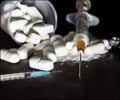A national campaign’s anti-drug TV ads failed to convince young children and teenagers to stay away from marijuana, a new research has found.
A national campaign’s anti-drug TV ads failed to convince young children and teenagers to stay away from marijuana, a new research has found.
In their 1999 to 2004 incarnation, the National Youth Anti-Drug Media Campaign’s TV ads “either had no effects on kids or possibly had a boomerang effect,” said Robert Hornik, lead author of a new study and professor of communication at the University of Pennsylvania.The U.S. Congress created the anti-drug campaign in the late 1990s and gave almost $1 billion to it through 2004, according to the study. The taxpayer-funded campaign continues to create anti-drug advertising today.
The study appears online and in the December issue of the American Journal of Public Health.
The researchers surveyed 8,117 children from 1999 to 2001 and followed up with many of them over the next several years. The children were nine to18 years old when they were first recruited for the study, the same ages as the group targeted by the campaign’s TV ads.
Ninety-four percent of the kids reported seeing two to three of the anti-drug ads per week. But seeing the ads didn’t reduce the likelihood that the children used marijuana. And it appeared that the ads possibly raised the risk that kids would be willing to try marijuana.
Of participants ages 12 to18 who reported seeing four or fewer ads from the campaign a month, 82 percent later reported that they “definitely” had no plans to smoke marijuana. The percentage fell to 78 percent among those who said they saw 12 or more ads a month.
Advertisement
“Our basic hypothesis is that the more kids saw these ads, the more they came to believe that lots of other kids were using marijuana,” Hornik said. “And the more they came to believe that other kids were using marijuana, the more they became more interested in using it themselves.”
Advertisement
“The campaign has made major changes to improve its effectiveness and, in fact, drug use among teens has dropped steadily in nearly every category since 2001,” she said.
Among other things, she said, the campaign has adjusted the messages of its advertising and is doing a better job of both analyzing ads before they air and evaluating their effectiveness afterward.
Source-Newswise
RAS/SK








